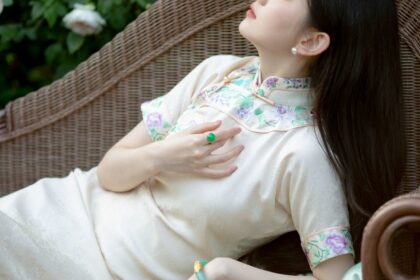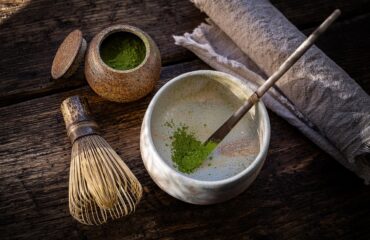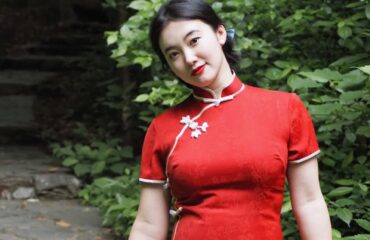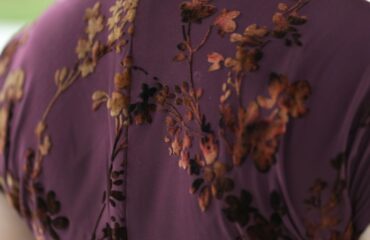
The cheongsam, or qipao, stands as an icon of feminine grace and cultural heritage. Its sleek silhouette, high mandarin collar, and delicate details have captivated the world for a century, evolving from a symbol of modern Chinese womanhood to a global fashion statement. With this enduring popularity comes a market flooded with options, ranging from exquisitely handcrafted heirlooms to inexpensive, factory-made replicas. For the discerning buyer, understanding the difference between an authentic, high-quality cheongsam and a mass-produced version is crucial. It is the difference between investing in a piece of wearable art and purchasing a fleeting trend. This guide will illuminate the key markers of quality, empowering you to identify the craftsmanship, materials, and artistry that define a truly authentic cheongsam.
1. The Fabric Tells a Story
The very soul of a cheongsam lies in its fabric. The material dictates the garment’s drape, feel, comfort, and longevity. An authentic cheongsam is a tactile experience, a pleasure to wear against the skin.
Authentic Cheongsams: Master tailors prioritize natural fibers that breathe and move with the body. Silk is the quintessential choice, beloved for its luster, softness, and beautiful drape. Varieties like silk brocade, with its intricately woven patterns of dragons, phoenixes, or flowers, are a traditional favorite. Other high-quality options include luxurious velvet, which offers a rich texture and depth of color, and fine linen or wool for more contemporary or seasonal interpretations. These fabrics are not only comfortable but also age gracefully, often becoming softer with time.
Mass-Produced Cheongsams: The primary goal of mass production is to minimize cost, which is most evident in fabric selection. Polyester and polyester-satin blends are ubiquitous. While they can mimic the shine of silk from a distance, they feel stiff, synthetic, and often have a cheap, overly glossy sheen. These materials do not breathe well, leading to discomfort in warmer weather, and are prone to static cling. They lack the elegant, fluid drape of natural fibers, instead hanging rigidly on the body.
| Feature | Authentic Cheongsam | Mass-Produced Cheongsam |
|---|---|---|
| Material | Silk (brocade, velvet), fine linen, wool | Polyester, satin-blends, rayon |
| Feel | Soft, smooth, natural | Stiff, slippery, synthetic |
| Drape | Fluid, elegantly follows body contours | Rigid, boxy, or clings unnaturally |
| Breathability | High; comfortable for extended wear | Low; can feel hot and stuffy |
| Sheen | Natural luster, subtle and rich | Artificial, overly shiny, or flat |
2. Craftsmanship in the Cut and Construction
The silhouette of a cheongsam is its most defining characteristic, and achieving the perfect fit is an art form. The difference in cut between a bespoke and a factory-made garment is stark.
Authentic Cheongsams: Traditionally, an authentic cheongsam is constructed from a minimal number of pieces to ensure a smooth, uninterrupted flow. A highly skilled tailor often uses a single piece of fabric for the main body, wrapping it from front to back. This requires immense precision and a deep understanding of the human form. The garment is shaped through meticulously placed darts and a cut that is customized to the wearer’s specific measurements. The result is a fit that skims the body, flattering the figure without constricting movement. It feels like a second skin.
Mass-Produced Cheongsams: These are created based on standardized sizing charts (S, M, L, XL), which cannot account for individual body shapes. To simplify production, they are often assembled from multiple flat panels sewn together. This piecemeal construction results in a fit that is often poor—too tight in the bust but loose at the waist, or vice versa. The silhouette can appear boxy and unflattering, failing to capture the signature elegance of the garment. Resources for traditional dressmaking, such as the articles and tailor directories found on Cheongsamology.com, often emphasize the importance of these traditional cutting techniques that are lost in mass production.
3. The Devil is in the Details: Pankou, Piping, and Zippers
The small finishing details are where true craftsmanship shines. These elements are not merely decorative; they are integral to the garment’s structure and authenticity.
Pankou (Frog Buttons): On an authentic cheongsam, the pankou are miniature works of art. They are handmade, often from strips of the same fabric used for the dress’s piping. Each knot is tightly and uniformly woven, creating a firm, three-dimensional button that is both beautiful and fully functional.
In contrast, mass-produced versions feature flimsy, machine-made pankou. They are often loose, easily misshapen, and made from cheap cord. In many cases, they are purely decorative, sewn onto a dress that actually closes with a hidden zipper, rendering them functionless.
Piping (Gǔnbiān): The delicate fabric trim that edges the collar, cuffs, hem, and placket is known as piping. On a high-quality cheongsam, this is applied by hand with incredible precision. It is smooth, even, and flawlessly navigates the garment’s sharpest curves and corners. This hand-stitching provides subtle structure and a clean, elegant finish. Machine-stitched piping on cheaper dresses is often uneven, bulky, and can cause the fabric to pucker, cheapening the overall look.
Zippers: While the most traditional cheongsams close only with pankou, modern authentic versions may incorporate a zipper for convenience. When used, it will be a high-quality, invisible zipper that is discreetly placed (often along a side seam) and expertly sewn in so that it lies perfectly flat without warping the fabric. Mass-produced cheongsams almost invariably use a cheap, standard zipper, often down the back. The installation is frequently clumsy, resulting in a wavy, bumpy seam that disrupts the smooth lines of the dress.
| Feature | Authentic Cheongsam | Mass-Produced Cheongsam |
|---|---|---|
| Pankou | Handmade, firm, functional, tightly woven | Machine-made, flimsy, often purely decorative |
| Piping | Hand-stitched, smooth, even, precise | Machine-stitched, bulky, uneven, can pucker |
| Zipper | High-quality, invisible, discreetly placed, expertly installed | Low-quality, standard, prominent, often poorly installed |
4. Pattern Matching and Placement
When a cheongsam is made from a patterned fabric like brocade, the placement of the pattern is a dead giveaway of its quality.
Authentic Cheongsams: A master tailor treats the fabric like a canvas. They will spend considerable time planning the cut to ensure that the pattern aligns perfectly across the seams. On a cheongsam that opens down the front, the two sides of the placket will be a mirror image. Major motifs, like a large flower or a dragon, will be centered thoughtfully on the chest or back, avoiding being awkwardly cut off by a seam or dart. This process is labor-intensive and can be wasteful of fabric, which contributes to the higher cost.
Mass-Produced Cheongsams: To maximize efficiency and minimize fabric waste, factories cut pattern pieces with no regard for the design. The result is a chaotic and jarring appearance. Patterns are abruptly cut off at the seams, a phoenix might be missing its head at the shoulder seam, or a floral design will be mismatched across the front opening. This is one of the clearest and most immediate signs of a low-quality garment.
5. Examining the Interior: Lining and Seams
A truly well-made garment is as beautiful on the inside as it is on the outside.
Authentic Cheongsams: Turn an authentic cheongsam inside out, and you will find impeccable finishing. It will almost always be fully lined with a high-quality, breathable material like silk habotai or cotton, which feels comfortable against the skin. All seams will be neatly encased, either with French seams or binding, to prevent fraying and ensure the dress endures for decades. There will be no loose threads or raw edges.
Mass-Produced Cheongsams: The interior often reveals the shortcuts taken during production. Many are unlined. If a lining is present, it is typically a cheap, static-prone polyester. Seams are finished quickly with a serger (overlocker). While effective at preventing fraying, serged seams are bulky and are the hallmark of fast fashion, not fine tailoring. You are also likely to find loose threads and messy stitching inside.
Choosing a cheongsam is a personal journey. While a mass-produced dress can be a fun, accessible way to try the style, it cannot compare to the beauty, comfort, and longevity of an authentic piece. By examining the fabric, the precision of the cut, the craftsmanship of the details, the thoughtful pattern placement, and the quality of the interior finishing, you can learn to appreciate the artistry involved in a true cheongsam. An authentic garment is more than just clothing; it is a testament to a rich cultural history and a piece of craftsmanship that you can cherish for a lifetime.


